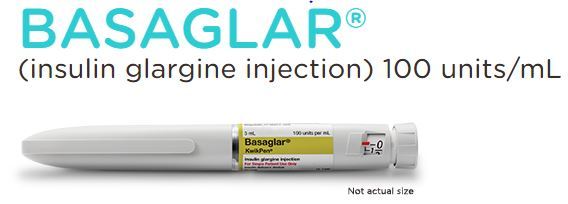Eli Lilly and Boehringer Ingelheim launched Basaglar, a biosimilar referencing Sanofi’s blockbuster insulin drug Lantus, in South Korea on Thursday, intent on challenging the original drug’s dominance in the domestic market for diabetes treatments.
Basaglar KwikPen, designed as a pen-shaped self-injection device, is a long-acting basal insulin for the treatment of adults and children with type 1 diabetes mellitus and adults with type 2 diabetes mellitus.
The drug secured approval from Korea’s Ministry of Food and Drug Safety in November 2015, but its domestic launch was delayed reportedly due to price negotiations between the drug’s developers and the local government.

Basaglar is already being sold in markets around the world, including in the US, Europe and Japan. It was approved by the European Medicines Agency in 2014 and by the US Food and Drug Administration in 2015.
Now debuting in Korea, Basaglar will compete with its reference drug Lantus (insulin glargline) as well as second-generation insulin drugs like Sanofi’s Toujeo (insulin glargline) and Novo Nordisk’s Tresiba (insulin degludec).
As a cheaper, near-replica alternative to the original drug, Basaglar is priced at 10,714 won ($9.50) per pen (300 international units per milliliter) at the top of the insurance coverage ceiling. That is around 14 percent cheaper than Lantus, priced at 12,245 won.
“When considering one pen, a price difference of just 1,500 won seems minor, but for diabetes patients who must receive the injections daily, this price difference can be significant in the long run,” said Cho Jae-yong, head of diabetes franchise at Eli Lilly Korea during a press conference held in Seoul on Thursday to mark Basaglar’s local launch.
According to Cho, a patient weighing 70 kilograms and in need of 0.51 IU/ml of daily insulin would require 12,600 IU/ml of insulin injections per year — or around 42 insulin pens. Choosing Basaglar would cost 449,988 won, while Lantus would cost 514,290 won.
With its pricing advantage to Lantus, Basaglar is also expected to compete with next-generation insulin drugs, which despite being more expensive, offer improved therapeutic effects compared to their first-generation counterparts.
First-generation insulin drugs Lantus and Basaglar will reach their peak effect in about 12 hours after injection and then begin to wear off. On the other hand, second-generation insulin drugs Toujeo and Tresiba can last for 24 hours with no pronounced peak or wear-off, and also require lower injection dosages.
In terms of pricing, Basaglar is currently around 20 percent cheaper than next-generation insulin drugs Toujeo, priced at 12,870 won, and around 97 percent cheaper than Tresiba, priced at 21,095 won, according to local reports.
Looking ahead, two other biosimilars referencing Lantus are also approaching commercialization in Korea -- one developed by MSD with partial funding from Samsung Bioepis, and another developed by India-based Biocon and locally marketed by Green Cross.
MSD’s Lusduna was approved by the EMA in January and is currently awaiting approval by the US FDA. The drug is also under review by the Korean Drug Ministry.
Korea’s Green Cross acquired the local licensing rights to a Lantus biosimilar developed by India-based Biocon in November 2016, and has filed the drug for approval in Korea.
By Sohn Ji-young (
jys@heraldcorp.com)








